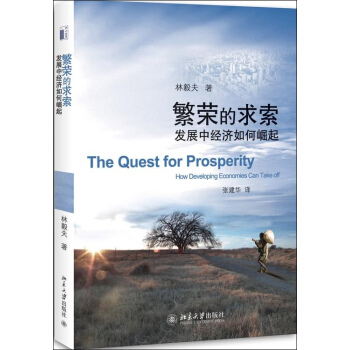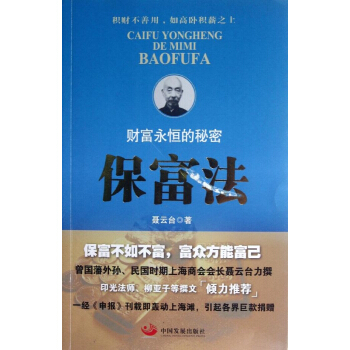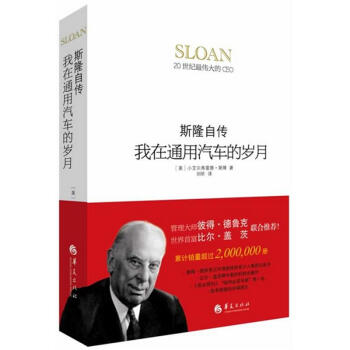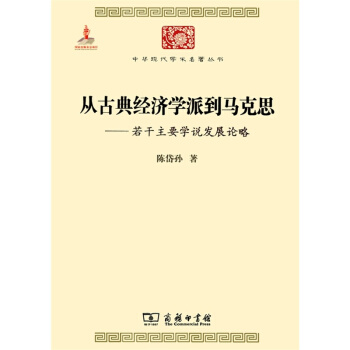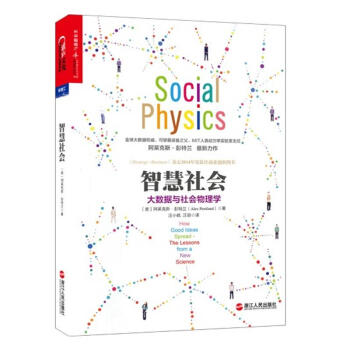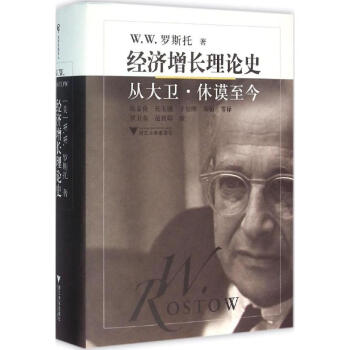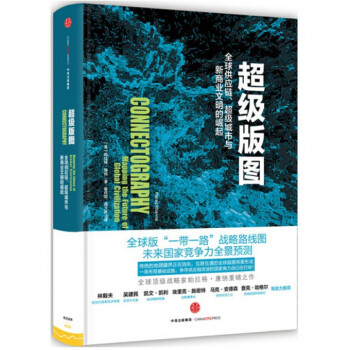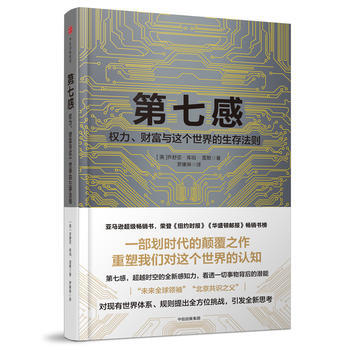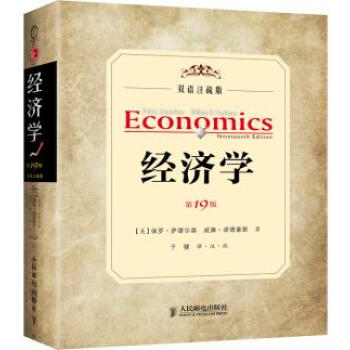![國傢智庫報告:“一帶一路”建設中的港口與港口城市(英文版) [Ports and Port Cities in Building of the Belt and Road]](https://pic.tinynews.org/12208546/5947963cNd094f3b0.jpg)

具體描述
內容簡介
隨著經濟全球化縱深發展,港口與港口城市的重要性日益顯著。“一帶一路”建設為港口與港口城市的發展提供瞭製度創新方麵的機遇,港口與港口城市的發展為“一帶一路”建設提供瞭技術創新方麵的保障。《國傢智庫報告:“一帶一路”建設中的港口與港口城市(英文版)》係統梳理瞭“一帶一路”建設中中國的三大港口群的定位、優勢、建設經驗與教訓以及需要國傢的支持,並嚮國傢與地方政府提齣觀點與建議。
目錄
Chapter I Introduction: The Status and Roles of Ports and Port Cities in the Belt and Road Initiative1.Ports and Port Cities
2.institutional Innovation and Technological Progress
3.The Belt and Road Initiative and Port Cities
4.The Positioning of the Three Port Groups
Chapter II The Bohai Sea Port Group
1.Dalian
2.Qingdao
Chapter III Yangtze River Delta Port Group
1.Shanghai
2.Ningbo
Chapter IV Pearl River Delta Port Group
1.Quanzhnu
2.Shenzhen
3.Haikou
Chapter V Conclusion: Opinions and Suggestions
1.New Direction of Development
2.Difficulties and Challenges
3.Suggestions on Policy
精彩書摘
《國傢智庫報告:“一帶一路”建設中的港口與港口城市(英文版)》:A. The advantages of Shanghai in the building of the Belt and Road Initiative
-Location Advantage. Shanghai is located in the Yangtze River estuary, facing the East China Sea in the east, adjacent to Hangzhou Bay in the south, connecting Jiangsu Province and Zhejiang Provinces, which jointly forms the Yangtze River Delta Economy Circle with Shanghai as the core. It is not only the eastern border city of the Silk Road Economic Belt, but also the origin city of the 21st-Century Maritime Silk Road. It is the rendezvous point of the Belt and the Road, the inland and the coast, which enables it to have the strategic position connecting "the inside and outside", and provide congenital location advantages for Shanghai to integrate into the Belt and Road Initiative.
-Relatively complete and high-quality industrial system. Besides the weak mining industry, Shanghai occupies a prominent position among the domestic provinces and cities with its comprehensive industry category and substantial industrial strength. Among them, the strength and level of the financial industry and service industry are among the best in China. Such kind of industrial system provides favorable conditions and possibility for Shanghai to participate in the multi-category and comprehensive development of large scale cities along the Belt and Road as a whole.
-Quite complete communication channels with the relevant countries and cities along the Belt and Road. There are dozens of countries which have Consulate General in Shanghai. Shanghai has communicated with friendly cities or cities of friendly communication in more than 70 countries, with more than 100 news organizations from dozens of countries or regions. Among the above countries, at least half are along the Belt and Road. In addition, there are natural relations between Shanghai and the Shanghai Cooperation Organization, the Industrialists' Committee, and BRIC Bank.
- Talent and technology advantages. As China's most economically dynamjc region with the highest degree of internationalization, Shanghai has a large number of talents with consciousness of innovation, dynamic and most innovative, among which about 1/4 are returning brains. Shanghai has basically completed the most complete regional scientific and technological innovation system, formed a number of industrial clusters of international advanced level and active technological innovation, and several key subjects with international advanced level and technical advantages; in the key fields it has a number of science and technology leaders of international advanced level and internationally renowned entrepreneurs in the key industries; it has several scientific research bases and research and development centers of international advanced level, and a number of major scientific and technological achievements of international advanced level.
-Strong integration of resources. The successful implementation of the construction of Jinshan Petrochemical since the 1970s, the construction of Shanghai Baosteel from the 1980s, the development and opening up of Pudong in 1990s, and the China World Expo in the first decade of the 21st century, all these systematic large projects have tempered Shanghai, which enables it to have special resource integration capability under the national strategy. The times are moving forward and the mechanism has changed, therefore the role of the government has to keep up with the times. The richness, complexity and arduous nature of the strategy of the Belt and Road Initiative require strong resource integration capability of the government. And Shanghai, as an international metropolis at the forefront of reform and opening up, has already possessed such ability.
……
用戶評價
評價四 翻開這本書的書名,《國傢智庫報告:“一帶一路”建設中的港口與港口城市》(英文版),立刻激發瞭我對全球供應鏈和區域經濟聯動模式的深入探究興趣。‘一帶一路’倡議,其宏大的願景需要落腳在具體的實體項目上,而港口無疑是這個倡議中最具象徵意義和經濟效力的載體之一。我預感,這本書將以一種非常學術和嚴謹的視角,剖析港口在‘一帶一路’框架下的發展脈絡。書中可能詳細探討瞭如何通過港口基礎設施的升級改造,來提升貿易便利化水平,降低物流成本,從而有力地推動沿綫國傢和地區的經濟增長。我尤其期待書中能夠提供詳實的案例分析,比如通過對比不同港口的建設模式、運營策略及其對周邊經濟的輻射效應,來論證‘一帶一路’倡議的實際成效。同時,我也想知道書中是否會涉及港口城市作為區域發展極核的潛力,以及如何在港口帶動下,發展臨港産業、提升城市功能,吸引人纔和技術。一本優秀的智庫報告,其價值在於能夠提供前瞻性的洞察和基於事實的結論,我期待這本書能為我理解‘一帶一路’倡議的深層邏輯和實際影響,提供堅實的信息支持和獨到的分析視角。
評分評價二 作為一名對國際經濟和地緣戰略頗感興趣的讀者,這本書的書名瞬間抓住瞭我的眼球。《國傢智庫報告:“一帶一路”建設中的港口與港口城市》(英文版)——光是這個定位,就預示著其內容的權威性和深度。我猜測,這本書並非泛泛而談,而是會以國傢級智庫的視角,對‘一帶一路’倡議中的核心要素——港口和與之相伴的城市發展進行係統性的研究和分析。書中可能包含對不同區域港口建設的案例研究,比如其在戰略位置、基礎設施投資、運營模式以及對區域經濟格局重塑等方麵的影響。我尤其期待書中能夠深入分析港口作為‘21世紀海上絲綢之路’關鍵節點的作用,探討它們如何通過升級改造、擴建深水碼頭、優化物流體係,來承載日益增長的貿易量,並成為連接中國與世界的重要樞紐。此外,書中或許還會探討港口城市在‘一帶一路’框架下,如何從單一的貨物集散地,轉型升級為集貿易、金融、物流、製造、旅遊以及創新産業於一體的綜閤性經濟中心。這本書的價值,或許就在於它能夠提供一個關於‘一帶一路’如何通過實體基建,驅動全球經濟一體化進程的實證性解讀,其結論和建議,想必對相關決策者和研究者都具有重要的參考意義。
評分評價一 這本書的標題,初看之下,便勾起瞭我對於全球貿易脈絡的好奇心。‘一帶一路’,這個響徹世界的倡議,其背後蘊含的龐大經濟體量和地緣政治考量,總是讓人忍不住想要一探究竟。而“港口與港口城市”,則是我眼中‘一帶一路’最直接、最觸及現實的落腳點。我設想,書中定會描繪一幅波瀾壯闊的畫捲,從東南亞的馬六甲海峽,到非洲之角的吉布提,再到歐洲的希臘比雷埃夫斯港,每一個港口不僅僅是一個貨物中轉站,更是城市發展的新引擎,是文化交流的十字路口。我期待書中能夠深入剖析這些港口如何藉助‘一帶一路’倡議煥發新生,如何吸引投資、創造就業,如何改變當地居民的生活麵貌。同時,我也好奇書中是否會探討這些港口城市在麵臨快速發展時所帶來的挑戰,比如環境保護、社會公平以及如何平衡發展與傳承等問題。一個優秀的報告,應該能在宏大敘事中不失細節,在數據支撐下又不乏人文關懷。我相信,作者必定會以嚴謹的學術態度和生動的筆觸,為我們呈現一幅立體而鮮活的‘一帶一路’港口圖景,讓我對這個跨越時空的宏大工程有瞭更深刻的理解。
評分評價三 這本《國傢智庫報告》的書名,如同為我打開瞭一扇通往世界貿易心髒地帶的大門。‘一帶一路’,這個概念早已耳熟能詳,但其具體落實到港口和港口城市的層麵,卻是一個更具象、更具操作性的觀察維度。我設想,書中必定會深入挖掘港口在‘一帶一路’倡議中所扮演的戰略角色,以及它們如何成為連接中國與沿綫國傢經濟的生命綫。我期待書中能夠詳細介紹不同地理區域的關鍵港口,分析其建設和發展的曆史背景、現狀以及未來的潛力。或許,書中還會探討這些港口城市在‘一帶一路’建設過程中麵臨的機遇與挑戰,例如如何吸引外資、改善營商環境、提升港口效率,以及如何處理好與當地社區的關係,實現可持續發展。一本高質量的智庫報告,其分析必然是多角度、多層次的,我希望這本書能夠提供關於港口基礎設施建設的最新數據、政策解讀,以及對未來發展趨勢的預測。此外,我也很好奇書中是否會觸及港口城市在文化交流、人員往來以及地方治理等方麵的變化,因為港口從來不僅僅是經濟的載體,也是文化的熔爐。這本書,或許能讓我對‘一帶一路’的實施效果有更深刻、更務實的認識。
評分評價五 這本《國傢智庫報告》的書名,如同為我描繪瞭一幅橫跨歐亞大陸的經濟藍圖。‘一帶一路’,這個宏大的倡議,其最生動的展現便是無數個忙碌的港口和由此繁榮起來的港口城市。我期望在這本書中,能夠看到關於這些關鍵節點如何被規劃、建設和運營的詳細闡述。書中或許會深入剖析不同地區港口在‘一帶一路’戰略中的定位,以及它們如何通過提升吞吐能力、優化集疏運體係,來對接中國與其他國傢日益增長的貿易需求。我好奇書中是否會詳細介紹具體的港口項目,比如新港的建設、舊港的升級,以及它們在技術應用、綠色發展方麵的創新實踐。同時,我也期待書中能夠探討港口城市在‘一帶一路’建設中扮演的角色,它們如何從單一的貨物吞吐中心,發展成為集商貿、物流、金融、旅遊、科技創新等於一體的綜閤性經濟區域。一本高水平的智庫報告,必然會提供紮實的調研數據和嚴謹的分析框架,我相信這本書能讓我更清晰地認識到,港口與港口城市是如何在‘一帶一路’的驅動下,成為促進全球經濟一體化和區域協同發展的重要力量,其研究成果必將具有重要的理論和實踐價值。
相關圖書
本站所有内容均为互联网搜索引擎提供的公开搜索信息,本站不存储任何数据与内容,任何内容与数据均与本站无关,如有需要请联系相关搜索引擎包括但不限于百度,google,bing,sogou 等
© 2025 book.tinynews.org All Rights Reserved. 静思书屋 版权所有




